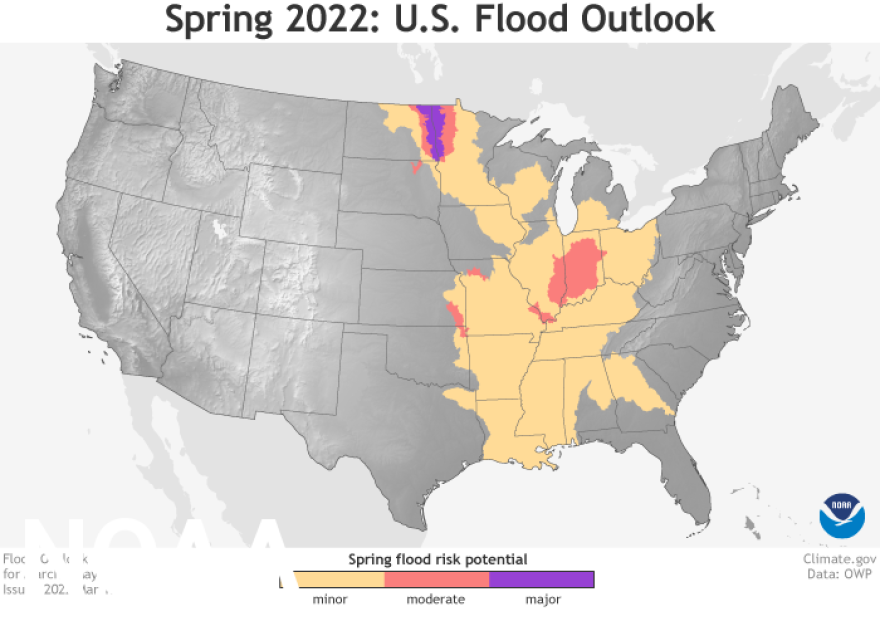There’s low risk of flooding along the Missouri River this spring.
The National Oceanic and Atmospheric Administration (NOAA) predicts that drought conditions in western Iowa will persist this year. National Weather Service hydrologist Kevin Lowe said those dry conditions are driving down the risk of floods.
“I believe that the hardest hit folks will be the ones that depend on Mother Nature to get them water, like farmers and ranchers,” Low said. “I would expect it would take another year of drought to where cities have to worry about intakes along the river.”
While the majority of Iowa is classified as abnormally dry or in moderate drought, Woodbury and Monona counties are facing severe drought. Low said the dry conditions have been ongoing for over a year, and are not likely to improve in the coming months.

Low said the region could still see major flooding caused by large thunderstorms. He said in the past ten years, storms with over 6 inches of precipitation have become more likely.
“So, even though we're seeing flood risk for this spring is reduced. I think people still need to be aware that big rains can still happen locally and cause devastating impacts locally,” he said.

Almost 80 percent of the Missouri River Basin is facing drought conditions, according to the latest data from NOAA. Low said large rainfall contributed to one major flooding event in the Missouri River Basin area last year, despite the drought.
The NOAA predicts that western Iowa will see 30 to 40 percent less precipitation this season and slightly above average temperatures.
In eastern Iowa, communities along the Mississippi River face a minor threat of flooding – which is historically the case for the region. Drought conditions in some portions of southeast Iowa are expected to end this spring.
Editor's note: A previous version of this story had an incorrect name for NOAA.





